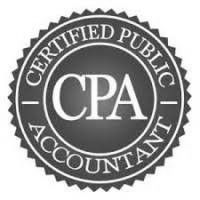You Deserve
Read our Blog
Updates from Our Desk to Yours

One of the most common opportunities we uncover at Highland Investment Advisors when working with new families is that they’re holding too much cash and earning too little on it. Fortunately, that’s a good problem to have and an easy one to fix. Clients often ask us questions like, “My emergency savings is earning X% at the bank, and I was offered a CD (or money market) at Y%. Is that good?” Since our team actively monitors the fixed income landscape, we’re well equipped to answer that and offer alternatives. Before we dive in, let’s acknowledge an obvious question: Is this the right amount of cash to be holding in the first place? Could some of it be working harder in a longer-term portfolio? That’s absolutely a conversation worth having. But for the purposes of this article, we’ll set that aside and focus on optimizing the cash you do plan to keep liquid. This article outlines the main vehicles available to help you earn more on your excess cash. Checking Accounts Frequently, cash accumulates in a family’s primary checking account at the bank. Unfortunately, most checking accounts do not pay interest, or if they do, they may come with other fees or minimum balance requirements. This is a significant source of profit for banks. Savings Accounts Sometimes families transfer cash to a savings account, which typically does not offer check-writing or online payments. At the mega-banks, interest is offered, but usually at a negligible rate (think fractions of a percent, like 0.01%). Rates may be slightly higher if the account holds a larger balance. Smaller banks or credit unions often offer better rates. Savings accounts are generally FDIC-insured up to $250,000, providing protection against bank failure. Bank Money Market The next step up the ladder is money market accounts. Most banks offer a money market account that can be linked to a family’s checking and savings accounts, simplifying transfers. Again, interest rates on bank-sponsored money markets tend to be low, though smaller institutions frequently offer higher yields than the mega-banks. Most money market deposit accounts are FDIC-insured. Certificates of Deposit (“CDs”) In exchange for locking up cash for a few months to several years, certificates of deposit often offer a higher interest rate than the bank’s money market account. CDs pay a fixed interest rate for the term, which protects investors if rates fall—but offers no benefit if rates rise. While typically more competitive than money markets, CD rates can vary based on the issuing bank’s credit quality. Most CDs are FDIC-insured. If the money is withdrawn before maturity, early withdrawal penalties will reduce the overall return. Certificates of Deposit Ladders One technique to manage the illiquidity of a CD is to create a ladder: investing in multiple CDs with staggered maturities. For example, one might mature in three months, another in six months, then nine months, and finally one year. This increases liquidity, but it also means the family must reinvest maturing CDs on a rolling basis. High Yield Savings Accounts Some families opt for high-yield savings accounts offered by online-only banks. These banks have lower overhead and can therefore offer higher interest rates. Many of these accounts have no monthly fees, and reasonable minimums. However, the absence of physical locations can make some transactions less convenient. Like traditional savings accounts, the interest rate will fluctuate with market conditions. Riskier banks may offer higher yields, so it’s important to verify FDIC insurance. Brokerage Money Markets Funds Brokerage firms offer money market mutual funds within both taxable and retirement accounts. These funds invest in highly liquid, short-term debt securities. Retail investors are typically offered “stable NAV” funds, which aim to maintain a $1.00 per share price. Yields fluctuate daily based on market conditions but are often higher than those from bank savings accounts. Interest accrues daily and is usually paid monthly in the form of additional shares. There are three main types of brokerage money market funds, each with different risk and tax considerations: Government Money Market Funds These are considered the safest, investing only in U.S. government-related securities such as Treasury bills, agency securities (like Fannie Mae or Freddie Mac), or repurchase agreements backed by government assets. Interest earned from Treasuries is exempt from state income tax. Prime Money Market Funds These funds carry slightly more risk by investing in short-term corporate debt, which is inherently riskier than government securities. In return, prime funds may offer slightly higher yields. Municipal Money Market Funds These funds invest primarily in short-term municipal securities issued by state and local governments. The interest is typically exempt from federal income tax, making them potentially attractive for families in higher tax brackets. With interest rates having risen meaningfully over the past few years, there’s no reason to let your cash sit idle. Whether you're holding funds for emergencies, upcoming expenses, or just peace of mind, there are smarter ways to earn more while keeping your money safe and accessible. If you'd like a second opinion on your current cash, or want help navigating the many options available, reach out to us. All content is for information purposes only. It is not intended to provide any tax or legal advice or provide the basis for any financial decisions. Nor is it intended to be a projection of current or future performance or indication or future results. Opinions expressed herein are solely those of Highland Investment Advisors, LLC and our editorial staff. The information contained in this material has been derived from sources believed to be reliable but is not guaranteed as to accuracy and completeness and does not purport to be a complete analysis of the materials discussed. All information and ideas should be discussed in detail with your individual adviser prior to implementation. Advisory services are offered by Highland Investment Advisors, LLC a SEC Investment Advisor.

Recent market volatility had the S&P 500 flirting with Bear Market territory. At one point intraday, the S&P 500 was down by -20% from the all-time high. What is a Bear Market? The term dates back to the 18th century to describe a market that has declined by at least -20% from the previous peak. The official definition requires the market to have finished the day down by at least -20%. So, while the S&P 500 is not technically in a Bear Market (as we write this on April 23rd, 2025), it is exhibiting the symptoms of a Bear Market. What typically happens during Bear Markets? Bear Markets are characterized by extremely high volatility with big swings in price, in both directions. Bear Markets have produced the largest single-day losses as well as the biggest single-day gains. It can get very confusing. It is possible the economy will subsequently experience a recession, but it is not a requirement for a Bear Market. For example, during the 2022 Bear Market, the U.S. economy did not contract to the point of recession. Bear Markets without recessions have historically been shallower declines with a faster recovery. It is also possible that a Bear Market is what causes a recession due to negative wealth effects causing businesses and consumers to cut spending, contracting the economy. Weird things can happen in Bear Markets. Historical relationships between various assets can change. Bonds had offered stability in portfolios when stocks were down—until the 2022 Bear Market when both lost a significant amount of value. In the 2008 Bear Market, frequently referred to as the Global Financial Crisis, real estate prices fell across the United States, which had never happened before. “Things” frequently “break” in Bear Markets due to the wide swings in price and lower liquidity. Financial markets may not function as expected. During the 2020 COVID Bear Market, futures contracts for West Texas Intermediate crude oil briefly traded at a negative price. In the 2008 Bear Market, previously safe money market funds lost enough to break the buck and fall below $1.00. In Bear Markets, it is common for someone to say that “It’s different this time” and then point to the weird and broken things as justification. Claims are made that buy-and-hold investing no longer works, or that diversification doesn’t provide benefits, or that markets will take 40 years to recover, or it’s now a stock picker's market because passive investing is dead. It’s never different. What should you do in a Bear Market? Below is our guide to both prepare for and survive a Bear Market. 1. Be prepared. Your portfolio should have enough risk to meet your financial goals, but not so much risk that a Bear Market causes you to lose sleep. Prepare ahead of time with an investment allocation that includes assets other than stocks. 2. Acknowledge your emotions. The “pain” from losses feels worse than the “joy” from gains. “Fight or flight” is a natural reaction to quickly make portfolio changes to “stop the bleeding.” When markets are volatile, try not to overreact in either direction. The fear of missing out (FOMO) can turn an investor into a trader. 3. Avoid mistakes. In volatile markets, the possibility for a “mistake” increases. Big mistakes, like selling into a crash, can easily be avoided. But opportunities for small mistakes are more prevalent when markets are changing quickly with large percentage daily swings in price. 4. Understand the irony of markets. The possibility of a drop in price, ironically, is highest when markets are richly priced at all-time highs. After a -20% decline, markets have de-risked. 5. Don’t think you are smarter than the market. Markets move too fast and in unpredictable ways during a Bear Market. Trying to get out and get back into the market has been shown to be a fool’s game. Missing the market’s best days has a dramatic impact on long-term results. And most of the market’s best days occur within Bear Markets. 6. Realize the difference in time horizon. Wall Street is focused on today, tomorrow, and this quarter. Their decisions are made within this short-term framework. Your investment horizon is next year, five years, and 25 years. Your long-term time horizon can allow you to take advantage of Wall Street’s shortsightedness. 7. Accept that nobody knows. Last week, on April 9th, Goldman Sachs called for a recession as their “base case” economic forecast. Seventy-three minutes later, they reversed their call, downgrading their projections of a recession. That same day, on April 9th, the S&P 500 gained 9.5% over the course of four hours. Either the long-term fundamental value improved by $4.5 trillion, or nobody really knows. 8. Realize that nobody rings a bell at the bottom. You won’t know that was “it” until much later. Concede that investment decisions take time to reach maturity and may go down before they go back up. 9. Bear Markets have tended to be shorter than bull markets. The average Bear Market typically lasts 11 months from top to bottom. However, the time it takes to recover from losses varies based on the severity of the Bear Market. The 2020 COVID Bear Market took five months to recover. The 2000 Dot-Com Bear Market took seven years. 10. Turn the TV off. Television, financial news, and social media are all designed to drive engagement. They do not have your best interest in mind. 11. Know where your cash is. Line up cash to meet your spending needs for the next year or two. This creates peace of mind to avoid having to raise cash in the midst of a downturn and de-risks the portfolio. 12. Stay diversified. Different assets respond differently in Bear Markets, reducing dramatic swings in the value of the overall portfolio. 13. Watch your allocations. Wide swings in values will move your portfolio out of line with the targeted allocations. Rebalancing keeps your risk in line with targets. Consider smaller, more frequent rebalancing to minimize the risk of bad timing. 14. Dollar cost average. This is the process of investing a certain amount of money at regular intervals, regardless of the market price. If you are in the Accumulation phase, Bear Markets provide an opportunity to purchase more shares at a lower cost. This same principle can be applied when withdrawing funds from the portfolio through portfolio sales occurring at regular intervals, regardless of the market price. 15. Tax loss harvesting. Sell a position for a tax loss, use the loss to first offset gains generated elsewhere in the portfolio, then deduct up to $3,000 against other income. Additional losses can be used in future years. Use the proceeds from the sale to replace the original position in something different that still provides market exposure. Watch out for the Wash Sale Rules. 16. IRA to Roth conversions. Converting a Traditional IRA into a Roth IRA in a down market lowers the tax cost of the conversion and shifts gains from a market recovery into the Roth account to grow tax-free. 17. Super fund 529 plans. You can fund five years’ worth of gifts into a 529 plan for education all at once, without concern of incurring gift tax, by electing to treat the contribution as if it were spread over five years. The hope is a recovery in investment markets accrues to beneficiaries. 18. Front load your 401(k) contributions. Pulling forward contributions into your 401(k) plan that you would have normally made throughout the year allows you to invest more in a market with depressed prices. But before you do, double-check how the company matching works to avoid missing out. 19. Take advantage of the dislocation. Time is the only variable you cannot control when compounding money. Time waits for no one. But Bear Markets are like a time machine, offering opportunities to make investments at prices you wish you had years ago, before the start of the last bull market. If you made it to the end of this article, thank you! If our thoughts above resonated with you, but it sounds like something a professional should be handling for you, get in touch with us to discuss how Highland can help you. All content is for information purposes only. It is not intended to provide any tax or legal advice or provide the basis for any financial decisions. Nor is it intended to be a projection of current or future performance or indication or future results. Opinions expressed herein are solely those of Highland Investment Advisors, LLC and our editorial staff. The information contained in this material has been derived from sources believed to be reliable but is not guaranteed as to accuracy and completeness and does not purport to be a complete analysis of the materials discussed. All information and ideas should be discussed in detail with your individual adviser prior to implementation. Advisory services are offered by Highland Investment Advisors, LLC a SEC Investment Advisor.







